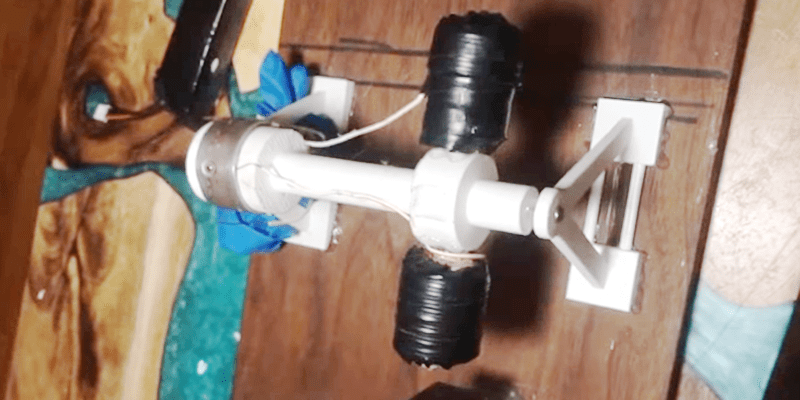A motor — or a generator — requires some normal magnets and some electromagnets. The usual arrangement is to have a brushed commutator that both powers the electromagnets and switches their polarity as the motor spins. Permanent magnets don’t rotate and attract or repel the electromagnets as they swing by. That can be a little hard to visualize, but if you 3D Print [Miller’s Planet’s] working model — or just watch the video below — you can see how it all works.
We imagine the hardest part of this is winding the large electromagnets. Getting the axle — a nail — centered is hard too, but from the video, it looks like it isn’t that critical. There was a problem with the link to the 3D model files, but it looks like this one works.
You can really see how the brushes and commutator work to flip the current direction through the coils. Being a simple demo, the brushes are probably not as robust as in a real motor, but for understanding how it works, it is a great demonstration.
If you’d rather build a brushless motor, we’ve seen those before. If you want a brushed motor quicker with no 3D printing, you can build one with just 3 wires, but it is harder to see the brush in that design.

















Interesting build and it’s up for debate if you could have build this quicker without a 3D printer but that’s not the point here I guess.
If you are a newbie and buy a simple motor from aliebay or wherever you are not aware of the challenges of making a good efficient motor and therefor cannot really appreciate it’s design. Only by building your own electric motor (brushed or not), you can fully appreciate the wonders of the construction of the very cheap, simply because you’ve encountered all sorts of problems when you build your own. But also admire the engineering problems overcome by the exclusive high end models. So It’s good to see these kind of projects here.
In other words: there is simply no better way to appreciate old and new engineering then by building your own crappy version(s) of it.
True, though that appreciation of “problems overcome” can pretty much applied to everything: running water, heating, food, roads, currency, law/rights (unfortunately to vastly different degrees depending on location and human status). If you’re reading this, you’re closer to the top of the “chain”.
it also provides an opportunity to find new and better ways to do things
It reminds me of the Leonardo Da Vries book of science exoeriments I was given about 1962 that had an electric motor design that used just Copper wire, nails and masking tape. I used the same idea with year 8 students about 5 years ago. It was still highly relevant, instructional and a valuable exercise.
It reminds me of the Leonardo Da Vries book of science exoeriments I was given about 1962 that had an electric motor design that used just Copper wire, nails and masking tape. I used the same idea with year 8 students about 5 years ago. It was still highly relevant, instructional and a valuable exercise.